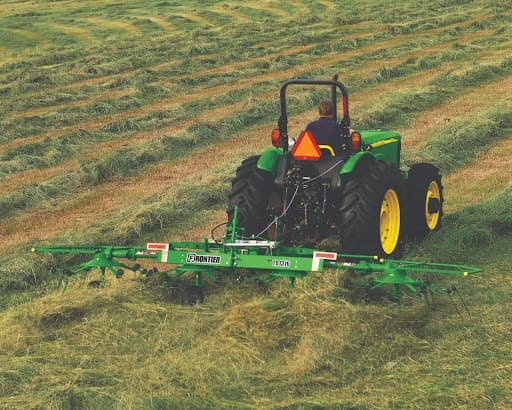How to Choose Between a Hay Tedder and Rake


Before hay is ready to be baled, several important steps must be completed. One crucial step is raking. One of the most crucial steps to complete before baling is raking and spreading it out. After the hay is freshly cut, it needs time to dry properly before it can be baled. This is where tools like hay rakes and hay tedder come in. These implements fluff, turn and spread the hay for increased sun and air exposure. Which one to choose depends on your environment. Let’s look at the differences between these two hay implements to determine which will benefit your operation the most.
A hay tedder’s purpose is to reduce dry downtime by spreading hay as wide as the cut width of the hay mower. This tool is mainly necessary for humid climates or after heavy rains. Baling hay with too much moisture can result in moldy crops and poor quality. The hay tedder speeds up the drying process, saving producers time and money by ensuring optimal hay quality. It is best to begin this process the second day after mowing. Even though this process is ideal for humid climates it should be avoided for crops that are very dry such as alfalfa to avoid leaf loss.
When to Use: In humid climates or wet and damp fields
A hay rake’s primary function is to prepare hay for baling by gathering it into windrows. While raking the hay does expose the crop to more sunlight, it is not a sufficient method for drying high-moisture crops, thus making it useful when the crop is about 70% dry. This is best done in dry arid climates or after using your hay tedder to properly dry hay. There are three types of rakes available including wheel, rotary and parallel bar. Raking should be done right before the baling process.
When to Use: As a final step before baling when crop is mostly dry
Now that you know the difference between these essential hay tools, you’re ready to choose the one that best fits for operation. Explore our inventory of reliable hay equipment now online or reach out to us today for more information on how we can help you optimize your fields.